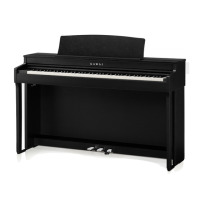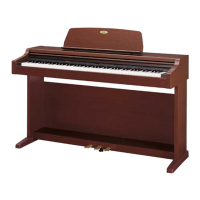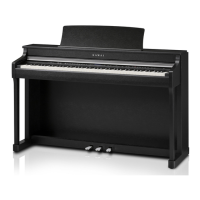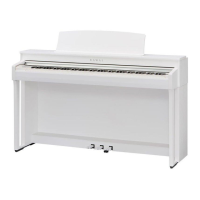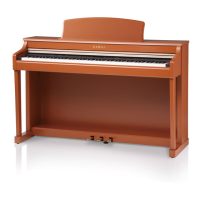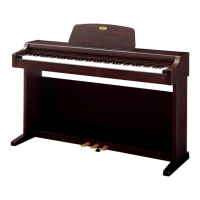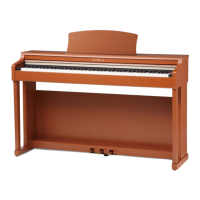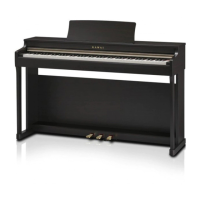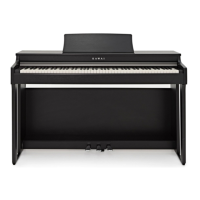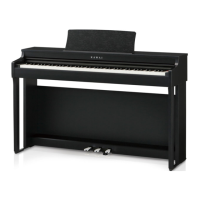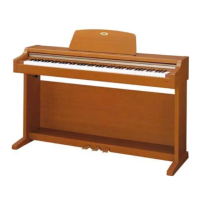1
The term MIDI is an acronym for Musical Instrument Digital Interface, an international standard for con-
necting musical instruments, computers, and other devices to allow the exchange of performance data.
When the instrument is connected to a computer using a USB cable, the computer will recognise the in-
strument as a MIDI device, allowing the instrument to send and receive MIDI messages in the same man-
ner as a normal MIDI interface.
Use a suitable USB cable to connect the USB type A port on the computer to the USB type B port on the
digital piano. If there is no USB type A port on the computer, a conversion adapter may be required.
▋ MIDI use case
When connected to a computer, the digital piano can be used to
record and playback performances using sequencer software
running on the computer. When multi-timbral mode is enabled
on the digital piano, it becomes possible to record and playback
multi-track songs, with dierent sounds playing simultaneously
on each MIDI channel.
P4
Multi-timbral Mode
▋ MIDI functions
The following functions are available with MIDI.
Transmit/receive note information
Transmit/receive note information from a MIDI-connected
musical instrument or device.
Transmit/receive Program Change number
Transmit/receive program change data to/from a MIDI con-
nected musical instrument or device.
Transmit/receive pedal data
Transmit/receive sustain, sostenuto, and soft pedal data from
a MIDI-connected musical instrument or device.
Receive volume data
Receive MIDI volume data sent from a MIDI-connected musi-
cal instrument or device.
Transmit/receive channel settings
Specify transmit/receive channels within the range of 1 to 16.
Multi-timbral mode setting
Receive multiple channel MIDI data from a MIDI-connected
musical instrument or device.
* Multi-timbral mode setting must be enabled.
Transmit/receive exclusive data
Transmit/receive front panel or menu function settings as ex-
clusive data.
Copyright notice
Pieces of music based on existing works such as CDs, music les, SMF data, etc. should only be used for private listening, and for en-
joying with friends and family. According to copyright law, it is not permitted to play commercial music publicly without permission
from the copyright owner. Kawai is not liable for any copyright law infringement committed by the digital piano user.
P8
MIDI Implementation Chart
“MIDI” is a registered trademark of the Association of
Musical Electronics Industry.
USB type “B”
USB type “A”
CN301 MIDI Settings Manual
